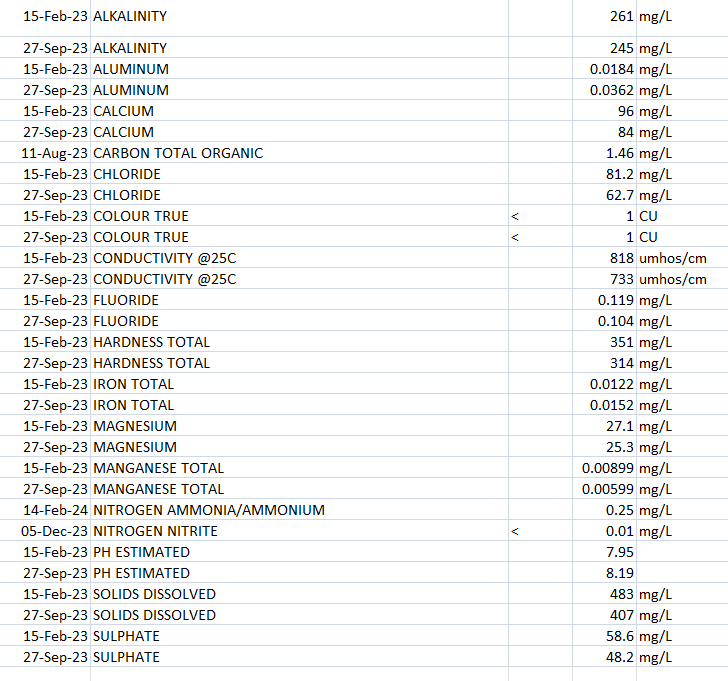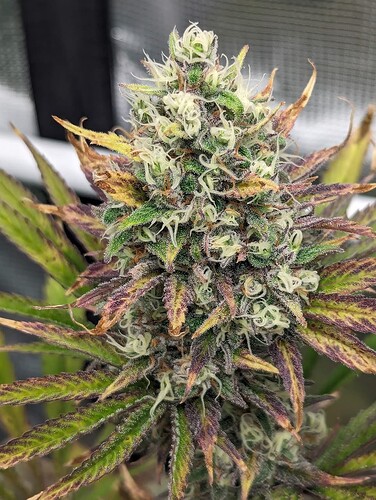Probably there will be many people who will disagree with me on this… but you could use this water.
Sure you can start from RO purified water and then dump all kinds of additives in it. And yes - that works. There’s evidence on both sides about whether it is MORE or LESS efficient than just growing stuff in soil and watering it like we do with all kinds of crops all over the world (like in Ontario…)
There are still plenty of people growing on the side of fucking mountains outside under the sun IN DIRT using water from local streams. And some of that flower is seriously fire.
And there’s still lots of people growing outside in rows with standard irrigation water.
I operated a very large greenhouse (40 acres, under the sun!) that pumped water from the ground into large tanks, mixed that water with fertilizers, and pumped it out to over 500,000 plants. Those plants grew big and happy and covered in trichomes. The water was not filtered or run through a membrane. But we did test the water to make sure that it’s heavy metals were low-ish (Arizona, everything seems to have heavy metals…)
And there are plenty of people that are collecting ALL THE WATER from their processes and reusing it out there. All of it. The runoff, the salt side of the RO, the stuff from the condensing units, the dehums, and even the handwashing sinks and tool washing basins. Sometimes they are running this back through filtration and then using it for the plants (because by this time its got all KINDS of stuff in it) and other times they are just using for irrigation for landscaping and things like flushing toilets.
You could go that route if you wanted.
The real question here is what are you trying to achieve. If you want to be Earth conscious and not have extra waste great! There are many ways to do this. If you don’t have access to a lot of water and want to conserve as much as you can because there’s just not enough to go around - huzzah! You can do this.
It sounds to me like you are in the first bucket there. There are so many ways to use that water. Is it possible that you have contaminates - yep. There are contaminates everywhere. Is it possible that those contaminates could cause harms - yep. But most of the issues that are listed here are things you have control over - for instance, you can control whether or not the dehum you are using has process oils in it. You can control the amount of preventative maintenance and cleaning your dehum gets - and thereby prevent A LOT of the micro-contamination that people have mentioned here.
And you can totally control how you collect, store, test, and use any of the water from your facility. Depending on your location - you can collect storm water and process it and use it as well.
There are so many options for sustainability. And yes there are costs - but there are costs with processing water through RO as well (including all that backwash and salt side waste).
The truth here is the our industry is fucking nasty and generally so focused on $$$ that it hardly ever stops to think about how it is actively destroying the planet. You know?
But you are not alone in your quest. There are many of us out there constantly looking for ways to reuse water, to regenerate our soils, to compost our plant wastes, to use the heat from our grow rooms for geothermal style heating/cooling of our facilities/parking lots/offices, to reduce our energy usage and to generate our own electricity.
So keep asking the questions and looking for solutions. I’ll keep collecting my condensate and using it to water the bushes that are required by my local municipality for utilities “screening”.
Let us know where you decide to go on this adventure. And if you want to know more about processes you can use to collect, store, treat, and use this water - let me know and I’ll work to hook you up with people in your area doing the same. <3
![]()

